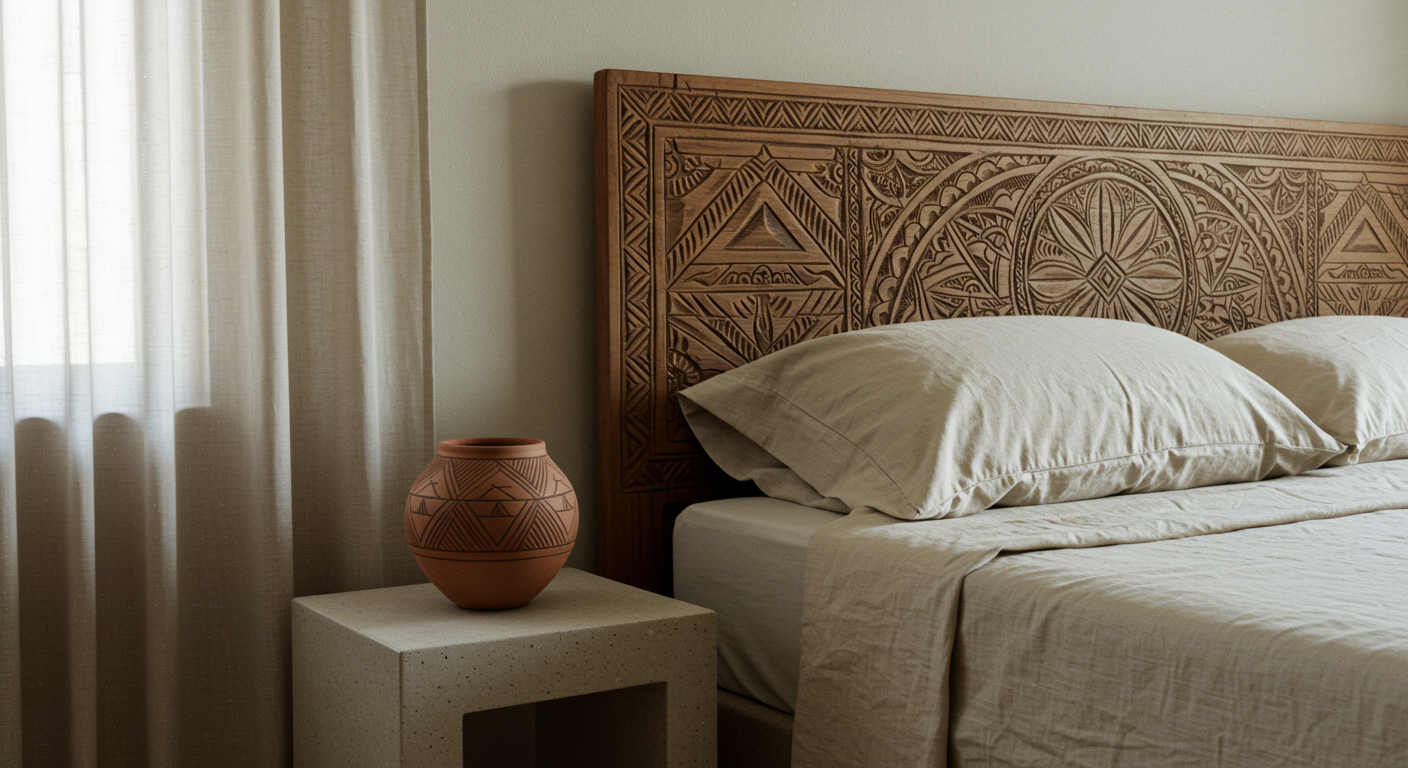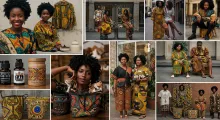Tribal art is one of Africa’s most profound expressions of identity, storytelling, and spirituality. From masks and carvings to textiles and pottery, every piece is layered with meaning. In today’s design world, incorporating tribal art into modern interiors is more than a trend — it’s a way of honoring heritage while bringing character, soul, and authenticity into contemporary spaces. Here’s how to seamlessly blend tribal aesthetics with modern design, whether you're decorating a minimalist apartment or a chic urban home.
1. Understand the Roots Before the Decor
Before hanging a mask or placing a sculpture, learn the origins of the art:
Where does it come from?
What does it symbolize?
Was it ceremonial, functional, or decorative in its original context?
Knowing this enriches your connection to the piece and ensures respectful representation. It also helps you tell a compelling story when guests ask about your décor.
2. Let One Statement Piece Speak
In modern interiors, less is often more. Instead of crowding a room with multiple tribal pieces:
Choose one large mask, a bold textile, or a carved wooden sculpture as a focal point.
Mount a large Senufo mask over a neutral couch.
Display a Dogon ladder or Ashanti stool in an entryway.
Hang Fulani jewelry or Tuareg metalwork in a shadowbox frame.
Let the piece breathe and command attention.
3. Blend Natural Materials with Clean Lines
Modern design favors clean lines, while tribal art often thrives on organic shapes. You can create a beautiful balance by mixing:
Raw wood sculptures on sleek glass or marble tables.
Woven baskets on white or black shelving units.
Clay pots or stone carvings against crisp painted walls.
This juxtaposition creates a design that feels both rooted and refined.
4. Use Tribal Patterns with Intention
Patterns are central to African tribal art — from the bold zigzags of Ndebele murals to the intricate motifs of Kuba cloth.
In modern spaces:
Add mud cloth (bogolanfini) throw pillows to a monochrome sofa.
Lay a handwoven kente runner on a dining table.
Frame a piece of Ankara or Adire fabric as wall art.
Keep the color palette limited so the patterns shine without overwhelming the space.
5. Mix with Modern Art for Contrast
A powerful way to elevate tribal art is by displaying it alongside modern or abstract works.
Pair a Bambara mask with a minimalist black-and-white sketch.
Hang a beaded Yoruba crown next to a color-blocked canvas.
Place a Makonde sculpture on a contemporary console table.
This interplay sparks conversation and highlights the timelessness of African art forms.
6. Use Lighting to Highlight Details
Tribal art often contains intricate textures and hand-crafted details. Use lighting to your advantage:
Track lighting or spotlights can illuminate wall-mounted carvings.
Install up-lighting behind freestanding statues to create dramatic silhouettes.
Pendant lights with woven shades can echo African craftsmanship while enhancing ambiance.
7. Create Curated Clusters
When using smaller items:
Group them in odd numbers (3 or 5).
Mix heights and textures — e.g., a tall Dinka headrest with a short Songye figure and a small bronze Benin sculpture.
Anchor the cluster on a tray, woven mat, or floating shelf.
Clustering creates impact without clutter.
8. Keep the Color Palette Grounded
Modern spaces often use neutrals like white, grey, black, and tan. African tribal art — often rich in ochres, earth tones, and deep browns — fits beautifully within this scheme.
Consider:
Black and white mud cloth in a Scandinavian-style room.
Warm-toned wooden art in a concrete-and-metal loft.
Colorful beaded items as pops of interest in a neutral living space.
9. Celebrate the Handcrafted Look
In an age of mass production, tribal art brings the beauty of imperfection. Celebrate:
Uneven lines on hand-thrown pottery.
Rough edges on hand-carved statues.
Natural dyes that vary in shade.
These signs of craftsmanship add authenticity and warmth to modern interiors.
10. Build Meaningful Connections
If possible, source tribal art directly from artisans or fair-trade cooperatives. It not only supports local creators but adds layers of meaning to your space — knowing that your decor also contributes to cultural preservation and empowerment.
Incorporating tribal art into modern spaces isn’t just about visual appeal — it’s about honoring legacy, inviting cultural dialogue, and building a home that tells a deeper story. By balancing minimalism with cultural richness, you can create an environment that feels both globally aware and deeply personal.



